BACK
Gross motor skills are the foundation of physical development, helping children move confidently, maintain balance, and explore their surroundings.
In Singapore, where early education often prioritises academics, physical play is sometimes overlooked—but it’s crucial for a child’s growth. Premium preschools near you, like Little Skool-House, exemplify how movement can be seamlessly integrated into daily learning, helping children build strength, coordination, and confidence as they grow.
In this article, we explore the top 8 gross motor skills activities for children in Singapore, along with key milestones and practical tips for parents.
What Are Gross Motor Skills and Why Are They Important?
Gross motor skills involve the use of large muscle groups, including the arms, legs, and back, for activities like running, jumping, climbing, and balancing. These movements are crucial for a child’s overall development, impacting not only physical strength but also coordination and spatial awareness.
Developing strong gross motor skills equips children to navigate daily tasks confidently, like walking up stairs, playing on the playground, or carrying their school bags. It also lays the groundwork for fine motor skills, supporting activities such as writing and drawing later on.
8 Engaging Gross Motor Activities for Children
Here are the top 8 activities that effectively build gross motor skills while keeping children active and entertained. Each activity is designed to build strength, coordination, and confidence in a super fun and engaging way.
1. Tummy Time: Building Core Strength from Day One
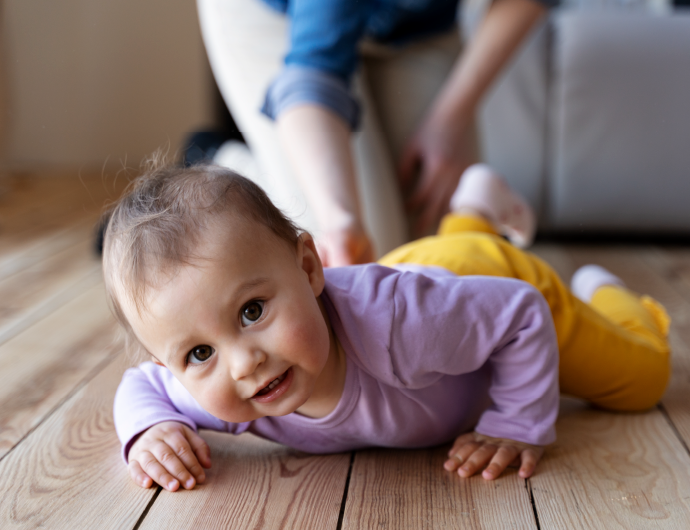
- Age Range: 0–6 months
- Benefits: Strengthens neck, back, and shoulder muscles.
Lying your infant on their tummy helps them develop crucial muscles needed for crawling and walking. Even a few minutes a day encourages upper body strength and head control.
2. Obstacle Course Adventures: Navigating Physical Challenges
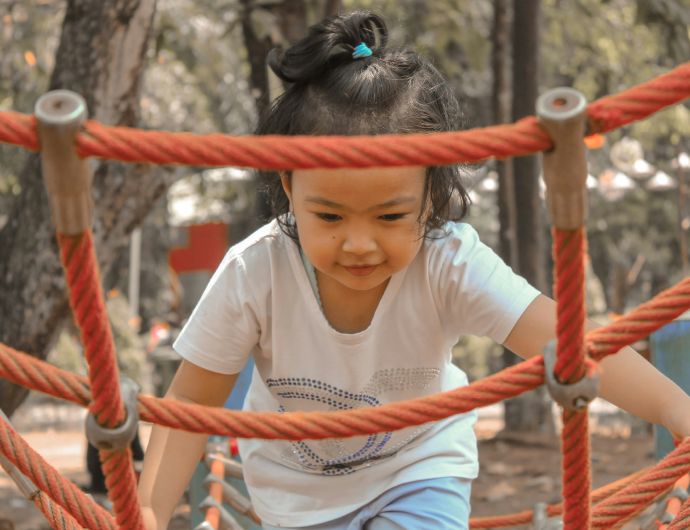
- Age Range: 2–5 years
- Benefits: Boosts coordination, decision-making, and muscle strength.
Create a simple obstacle course at home or outdoors using cushions, tunnels, and furniture. Encourage your child to crawl, jump, and climb through the course, building both physical and cognitive skills.
3. Climbing Adventures: Building Strength and Confidence

- Age Range: 2–5 years
- Benefits: Enhances arm and leg strength, balance, and confidence.
Safe climbing—whether on playground structures or indoor playsets—helps children build muscle and spatial awareness.
4. Yoga for Little Movers: Stretch, Balance, and Grow
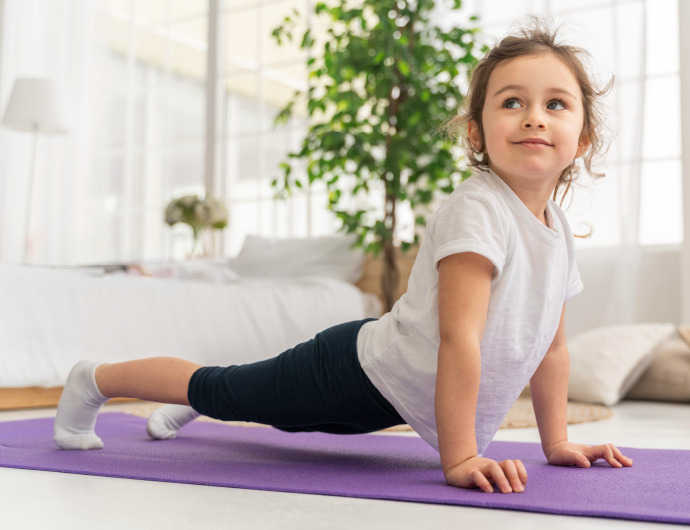
- Age Range: 2–5 years
- Benefits: Improves flexibility, balance, and mindfulness.
Simple yoga poses like “Tree Pose” and “Downward Dog” encourage body awareness and calmness while enhancing balance and strength.
5. Animal Walks: Moving Like the Wild
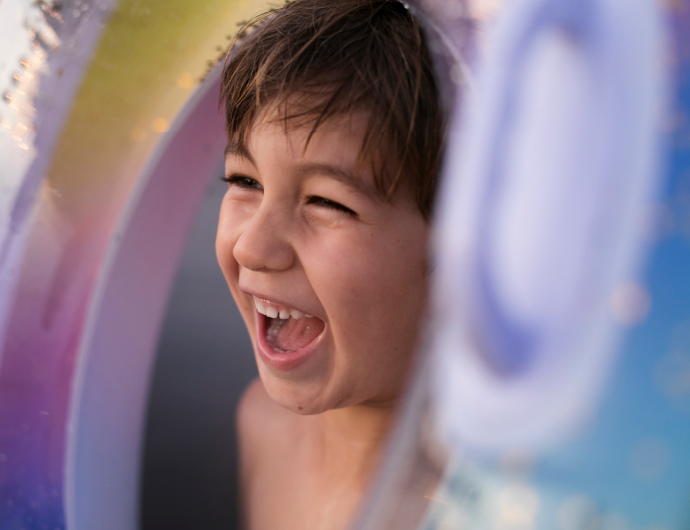
- Age Range: 1–5 years
- Benefits: Develops gross motor strength, coordination, and imagination.
Encourage your child to walk like a bear, hop like a frog, or waddle like a penguin. This fun activity strengthens muscles and boosts creativity.
6. Scooter Rides: Rolling Towards Confidence
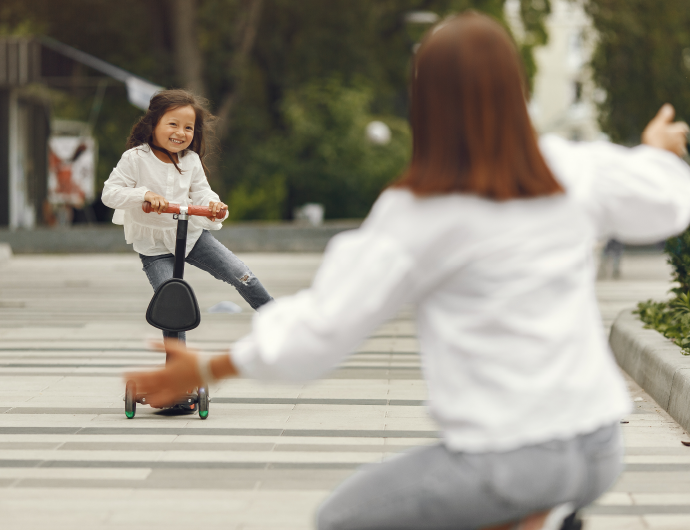
- Age Range: 3–5 years
- Benefits: Enhances leg strength, balance, and spatial awareness.
Riding a scooter not only promotes physical activity but also improves directional control and balance.
7. Ball Kicking and Dribbling: Boosting Coordination and Focus
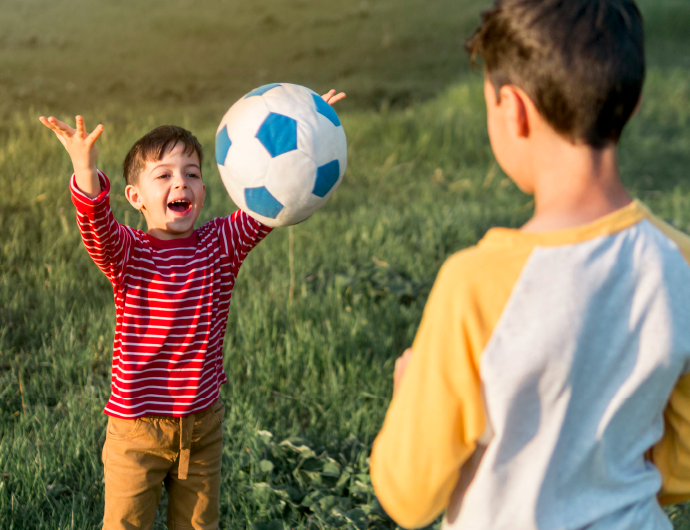
- Age Range: 2–5 years
- Benefits: Develops foot-eye coordination, strength, and focus.
Kicking and dribbling a ball is a simple yet effective way for children to understand movement, timing, and balance.
8. Parachute Play: Collaborative Fun and Movement
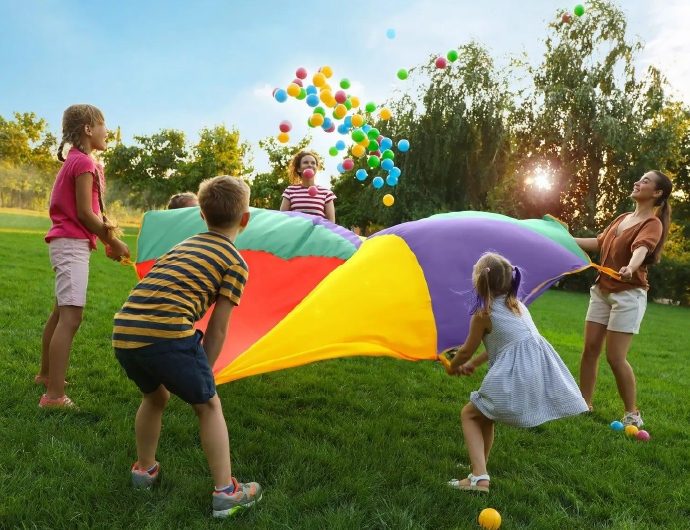
- Age Range: 3–5 years
- Benefits: Builds teamwork, coordination, and upper body strength.
Using a large parachute, children shake, lift, and run under it, encouraging cooperative play and muscle development.
Practical Tips for Safe and Fun Gross Motor Activities
Ensuring your child’s safety while they explore and develop their gross motor skills is crucial. Here are some practical tips to keep their playtime both safe and enjoyable:
- Create a Safe Play Environment. Set up a dedicated space free from sharp edges or hazardous objects. Soft mats and padded corners can help cushion falls as children explore movement.
- Choose Age-Appropriate Activities. Select activities that match your child’s developmental stage. For example, crawling races are perfect for infants, while obstacle courses are more suitable for preschoolers.
- Supervise, but Don’t Hover. Children need space to experiment with movement, but always keep an eye on them, especially during climbing or balancing activities. Offer guidance if needed, but allow them to learn through exploration.
- Encourage, Don’t Pressure. Celebrate your child’s progress, whether it’s their first crawl or first jump. Avoid pressuring them to meet milestones too quickly; every child develops at their own pace.
- Incorporate Play into Daily Routines. Make movement a natural part of your child’s day. Simple activities like walking to the playground, playing with a ball, or even dancing at home can help build their gross motor skills.
Gross Motor Skill Milestones: What to Expect as Your Child Grows
Understanding the typical developmental milestones for gross motor skills can help you track your child’s development and identify areas where they might need more support. Here’s a breakdown of key physical milestones by age group:
| Age Group | Milestones | Activities to Encourage |
| Infants (0–6 Months) | Lifting head during tummy time, rolling over, pushing up on hands. | Tummy time, reaching for toys, and gentle assisted sitting. |
| Crawlers (6–12 Months) | Sitting independently, crawling, pulling up to stand, cruising along furniture. | Crawling races, supported standing, and interactive floor play. |
| Toddlers (1–2 Years) | Walking independently, climbing stairs with support, and running with balance. | Walking on different surfaces, simple climbing, and kicking soft balls. |
| Preschoolers (3–5 Years) | Running, hopping, skipping, climbing confidently, throwing and catching balls. | Obstacle courses, dancing, and balance beam activities. |
Gross motor skills develop progressively from infancy through childhood, forming the foundation for more complex movements and contributing to overall independence and confidence.
Little Skool-House: Supporting Gross Motor Skills Growth Beyond the Home
Gross motor skills are crucial for your child’s physical and emotional development, and while activities at home are a great start, continuing to nurture these skills in a preschool setting is key to their growth.
At Little Skool-House, we provide a rich, supportive environment where children can continue to develop these essential skills through daily physical activities, expert guidance, and opportunities for social interaction.
We offer children structured spaces and activities designed to enhance coordination, strength, and balance, while also fostering independence and confidence. With a blend of purposeful play areas, guided activities, and individualised support, we ensure that each child has the space to grow, explore, and reach their full potential.
By extending your child’s gross motor development from home to preschool, you’re providing them with the tools they need to build resilience, improve their physical health, and gain the confidence to face new challenges.
Choose from 20 Conveniently-Located Centres
Discover the Little Skool-House Difference
Register Now for a Journey of Learning and Growth.
- Award-winning teachers
- Proven bilingual curriculum
- Trusted by parents across Singapore
Limited slots available. Secure your child’s place today.



